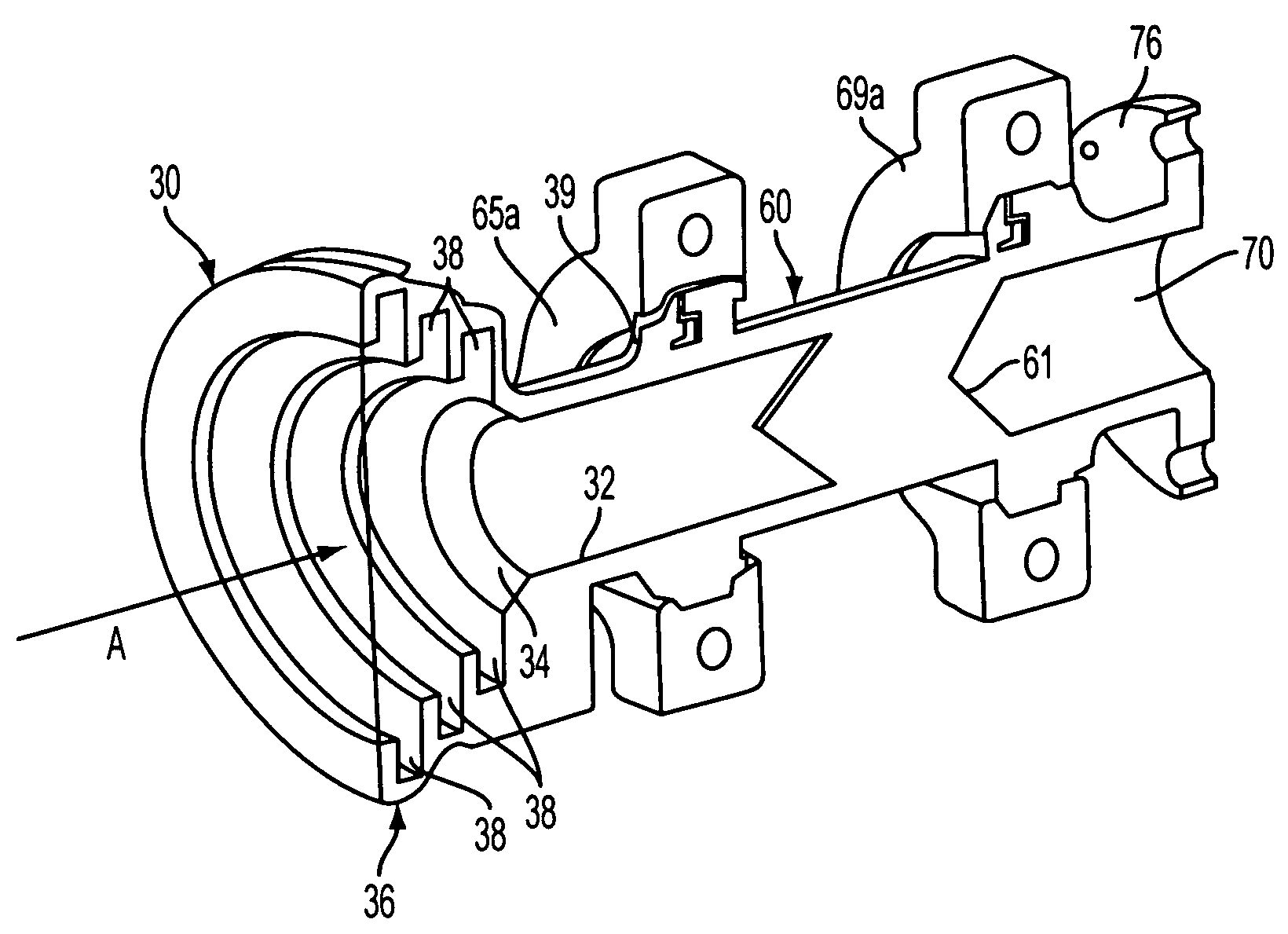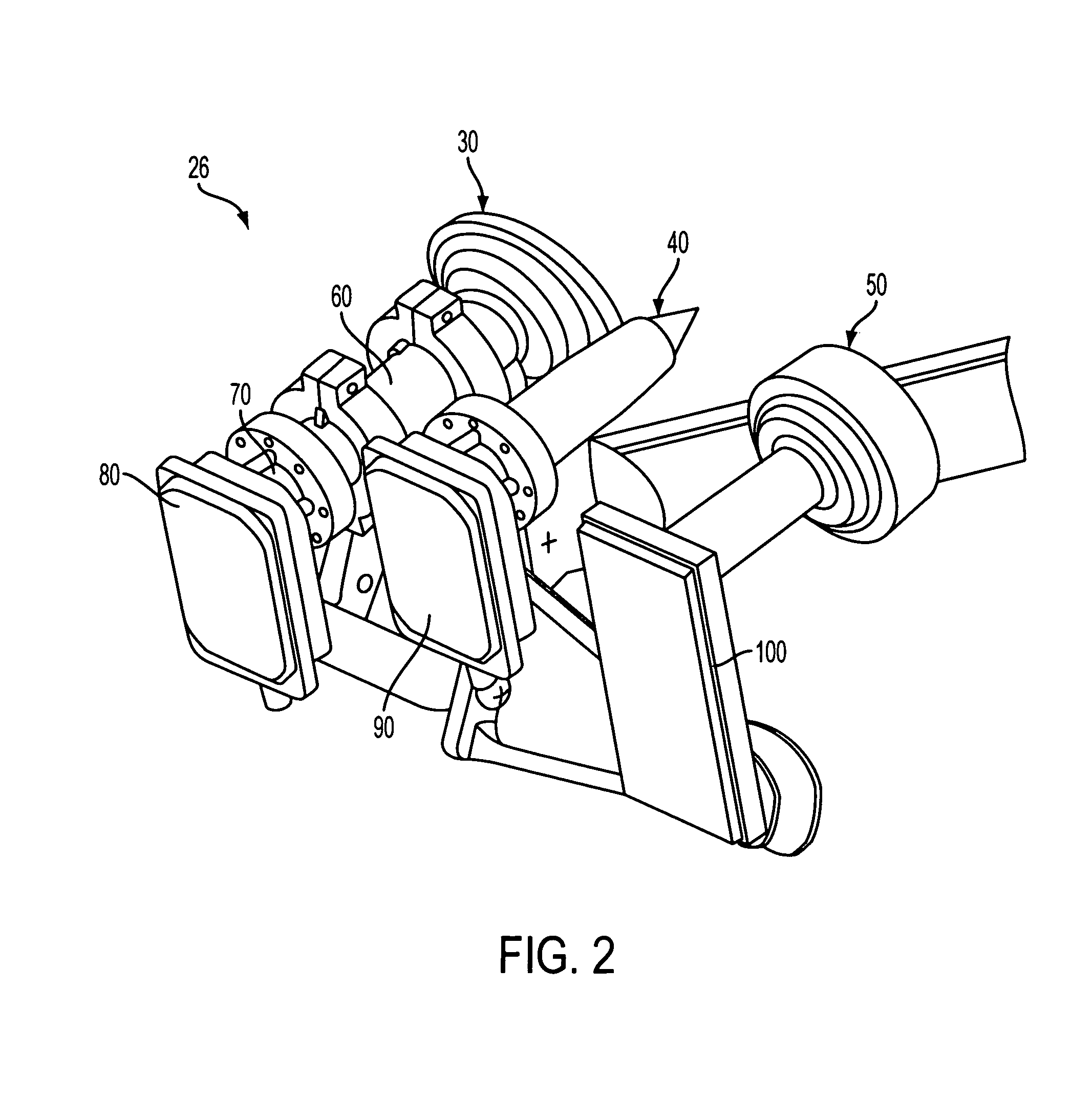Feed assembly for multi-beam antenna with non-circular reflector, and such an assembly that is field-switchable between linear and circular polarization modes
a multi-beam antenna and reflector technology, applied in the field of antennas, can solve the problems of elliptical reflectors, not maintaining symmetry, and not being practicable for most customers, and achieve the effect of facilitating the close proximity of the two feeds, reducing the overall size, and facilitating the close spacing of the feeds
- Summary
- Abstract
- Description
- Claims
- Application Information
AI Technical Summary
Benefits of technology
Problems solved by technology
Method used
Image
Examples
Embodiment Construction
[0033]The present inventions now will be described more fully hereinafter with reference to the accompanying drawings, in which some, but not all embodiments of the invention are shown. Indeed, these inventions may be embodied in many different forms and should not be construed as limited to the embodiments set forth herein; rather, these embodiments are provided so that this disclosure will satisfy applicable legal requirements. Like numbers refer to like elements throughout.
[0034]A multi-beam antenna 20 in accordance with one embodiment of the invention is shown in FIG. 1. The antenna includes a reflector 22 of non-circular profile; in the illustrated embodiment, the reflector has an elliptical profile, but the invention is not limited to such profile. It also applies to any geometry having aspect ratio larger than 1. Mounted on a boom 24 in front of the reflector is a feed assembly 26 having three feeds for establishing three separate communication links with three different sate...
PUM
 Login to View More
Login to View More Abstract
Description
Claims
Application Information
 Login to View More
Login to View More - R&D
- Intellectual Property
- Life Sciences
- Materials
- Tech Scout
- Unparalleled Data Quality
- Higher Quality Content
- 60% Fewer Hallucinations
Browse by: Latest US Patents, China's latest patents, Technical Efficacy Thesaurus, Application Domain, Technology Topic, Popular Technical Reports.
© 2025 PatSnap. All rights reserved.Legal|Privacy policy|Modern Slavery Act Transparency Statement|Sitemap|About US| Contact US: help@patsnap.com



